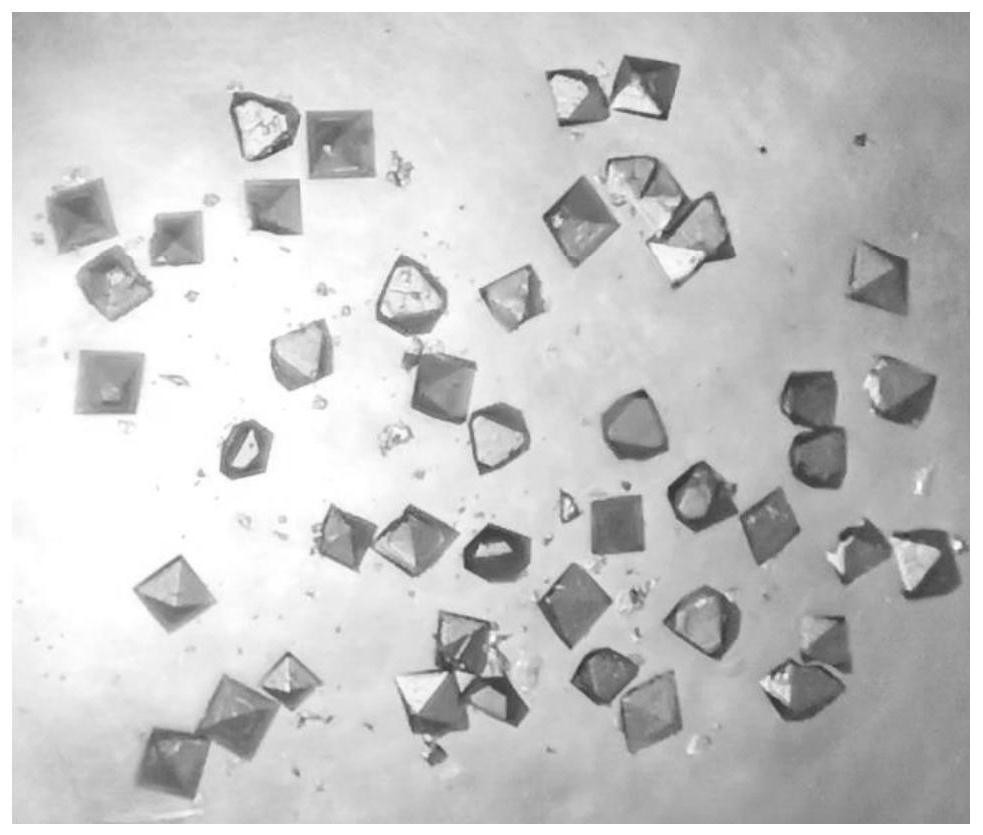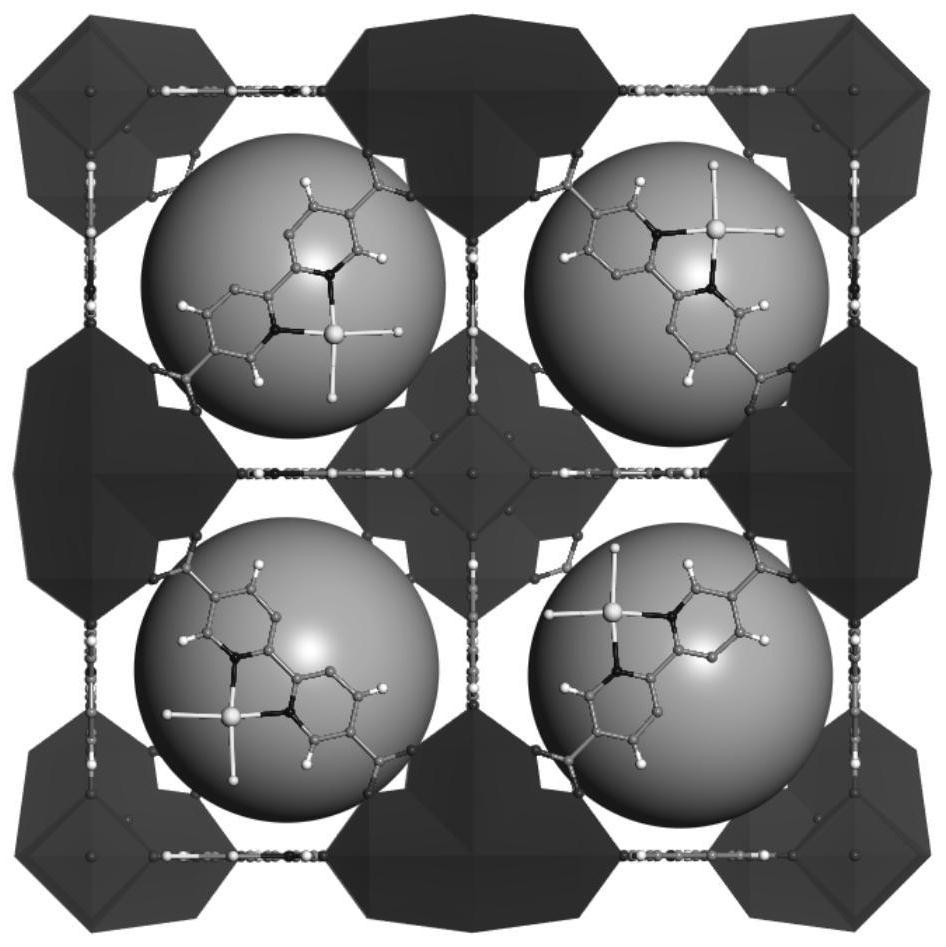Th-MOF loaded Cu-based single-site catalytic material as well as preparation method and application thereof
A catalytic material and single-site technology, applied in electrolytic components, electrodes, electrolytic processes, etc., can solve the problem of low catalytic activity of catalysts
- Summary
- Abstract
- Description
- Claims
- Application Information
AI Technical Summary
Problems solved by technology
Method used
Image
Examples
Embodiment 1
[0029] Embodiment 1: The preparation method of a Th-MOF supported Cu-based single-site catalytic material of this embodiment is carried out according to the following steps:
[0030] Step 1. Preparation of Th-MOF material: Dissolve 1 mmol of thorium nitrate hexahydrate and 1 mmol of 2,2'-bipyridine-5,5'-dicarboxylic acid in 3 mL of N,N'-dimethylformamide solution, then add 1mmol of nitric acid, stir evenly, transfer to a polytetrafluoroethylene lining, seal it and put it into a high-pressure reactor, heat it to 110°C at a heating rate of 1°C / min in a muffle furnace and keep the temperature constant Reacted for 3 days, centrifuged after the reaction, washed with methanol, and vacuum-dried at a temperature of 70 ° C to obtain a colorless octahedral crystal Th-BPYDC (see figure 1 ), namely Th-MOF material;
[0031] Step 2, preparing a precursor solution containing copper ions: dissolving 0.5 g of copper chloride in 5 mL of acetonitrile solution to prepare a precursor solution co...
Embodiment 2
[0035] Example 2: The Th-MOF-loaded Cu-based single-site catalytic material (Cu@Th-BPYDC) prepared in Example 1 was used in the electroreduction of NO 3 - Application in synthetic ammonia.
[0036]Electroreduction of NO with Cu@Th-BPYDC prepared in Example 1 3 - Synthetic ammonia, the result is as Figure 4-Figure 8 shown.
[0037] Depend on Figure 4 It can be seen that the Cu@Th-BPYDC of Example 1 has excellent electroreduction of NO 3 - Ammonia performance with current density up to 80.7mA cm at -0.1Vvs RHE potential -2 , much better than Cu-free Th-BPYDC. With the increase of cathode potential, the rate of ammonia formation gradually increased ( Figure 5 ), but the Faradaic efficiency presents a volcanic trend of first increasing and then decreasing ( Figure 6 ), the ammonia formation rate and Faradaic efficiency are as high as 225.3 μmol h at the optimal voltage -0.1 V vs RHE -1 cm -2 and 92.5%. The Cu@Th-BPYDC single-site catalyst has excellent stability, ...
PUM
| Property | Measurement | Unit |
|---|---|---|
| Current density | aaaaa | aaaaa |
Abstract
Description
Claims
Application Information
 Login to View More
Login to View More - R&D
- Intellectual Property
- Life Sciences
- Materials
- Tech Scout
- Unparalleled Data Quality
- Higher Quality Content
- 60% Fewer Hallucinations
Browse by: Latest US Patents, China's latest patents, Technical Efficacy Thesaurus, Application Domain, Technology Topic, Popular Technical Reports.
© 2025 PatSnap. All rights reserved.Legal|Privacy policy|Modern Slavery Act Transparency Statement|Sitemap|About US| Contact US: help@patsnap.com



